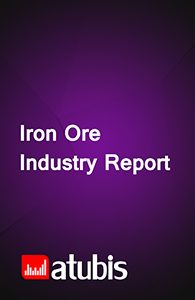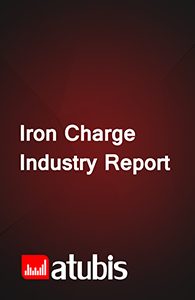Oman’s Iron Ore Pellet Market Outlook Report
9,716€
- TRY: 475,000 ₺
Iron ore pellets generally fall into two categories: direct reduction grade, and blast furnace grade. Direct reduction pellets are mostly used in the production of DRI and usually have higher grades and premiums, while blast furnace pellets are used in blast furnaces and generally have lower premiums. Since there are no blast furnaces in Oman for the production of steel, all the iron ore pellets produced in the country is DRI-grade.
Product Description
With a per-capita GDP of $32,400 in 2019, Oman was the fifth largest economy in the region that year, behind Qatar, the United Arab Emirates, Bahrain, and Saudi Arabia. The country’s economy has steadily grown over the past years, and according to the Oman Vision 2040, economic growth is expected to continue over the coming years. The country’s logistical location that connects the Gulf Cooperation Council (GCC) countries to the world is one of the major factors in expanding its relations and trade with other countries; the free trade agreement with the US since 2009 is one example. Oil and petrochemicals account for a major portion of the country’s exports. In 2019, about 70% of the country’s total export revenues came from oil and oil-related products. The iron and steel industry in Oman is an emerging business with a history shorter than a decade. Still, total exports of the industry take the second largest share in the country’s export revenues, behind oil products.
Market drivers of Oman’s iron ore pellets
Owing to its logistic location that provides access to Arab states of the Persian Gulf for producers from far away, Oman has become an attractive venue for foreign investment. On this basis, the country’s iron ore pellet production was developed through a joint venture with the Brazilian Vale. This has facilitated access to raw materials for sponge iron production in the country, while many foreign rivals producing DRI in the region are having difficulty securing raw materials. The country’s location has also made it easier to secure iron ore fine, creating a great opportunity for the growth of the iron ore pellet market.
Lower grades of iron ore in mines around the world and the requirement of crushing by miners in order to remove deleterious elements will create an opportunity for iron ore pellets in the future; many are forecasting a much faster growth for iron ore pellets compared to fines.
High availability of natural gas as one of the most important consumables in producing sponge iron as well as the environmentally friendly nature of using the raw material will drive the growth of the sponge iron market in Oman, supporting the development of the iron ore pellet market.
Oman reported its first case of Covid-19 in late March 2020. Before long, in April, social distancing and lockdowns were implemented. As a result, the country’s mobility index dropped more than 30%. As the pandemic continued to spread, lockdowns were extended into mid-April, but activities were gradually resumed under certain protocols. Lockdowns are expected to continue, significantly disrupting industrial performance and restricting operations.
Overview of Oman’s iron ore pellet market
The production of iron ore pellets in Oman started with a joint venture between the Brazilian Vale and Oman Oil Company in the Sohar special industrial area. The investment was aimed at supplying raw materials to the massive sponge iron market in the Persian Gulf region, but only approximately two thirds of the project has been utilized. A lack of development in the downstream parts of the steel industry in the region has restricted the growth of the steel market; this, combined with high transportation costs of iron ore and concentrate from Brazil, is the main factor behind the retardation of the country’s iron ore pellet industry. Given the sluggish growth of downstream development in the region, Oman’s pelletizing plants are expected to continue operating at low rates and consumers will import a large part of their demand from Brazil. However, the completion of the GCC Railway in the long term can support the development of the country’s iron ore pellet market.
Key players in Oman’s iron ore pellet market:
- Vale oman Pelletizing Co. L.L.C.
- Jindal Shadeed Iron and Steel L.L.C.
Additional Information
| Industry | Iron Ore Pellet |
|---|---|
| Region | Oman |
| Report Type | Industry Report |
Reasons to Buy
- Recognize the geographical distribution of import demand
- Identify the current and future key players of the trading market
- Achieve a better insight on potential target markets
- Understand the behavior of major suppliers/customers either globally or regionally
- Identify competitors as a feed for market analysis
Table of Content
- Executive summary
- Introduction
- Objective
- Market under study
- Product
- Product specifications
- Consumption structure
- Applications
- Physical properties
- Subjects discussed
- Geographical scope under study
- Study timeframe
- Study currency
- Potential audience
- Market dynamics
- Market drivers
- Restraints
- Opportunities
- Challenges
- Market overview
- Market size
- Industry capacities
- Existing capacities
- Capacity distribution
- Geographical distribution of capacities
- Future capacities
- Existing capacities
- Output
- Output trends
- Operating rates
- Consumption
- Consumption trend
- Consumption Share of domestic product
- Trade
- Exports
- Imports
- Trade balance
- Market balance
- Market breakdown by product type
- Market breakdown by product type
- Market breakdown by application
- Inventory
- Producers inventory
- Consumers inventory
- Traders inventory
- Market outlook
- Market factors
- Raw materials
- Costs and prices
- Competition
- The government
- Other factors
- Future scenarios
- Risks to forecast
- Market factors
- Consumer markets
- End-user markets
- Building construction
- Infrastructure construction
- Transportation manufacturing
- Industrial equipment manufacturing
- Durable goods manufacturing
- Consumable goods manufacturing
- Direct consumer markets
- Major Direct consumers
- Existing capacities
- Drivers
- Major Direct consumers
- End-user markets
- Export potentials
- Destinations
- Trade and insurance costs
- Import market suppliers
- Producers potential share
- Destinations
- Industry overview
- Raw materials
- The supply volume of raw materials
- Supply channels of raw materials
- Raw materials procurement costs
- Cost structure of producers
- Production cost curve
- Industry value added
- Generated new scrap
- Technology
- Raw materials
- Market landscape
- Domestic sales markets
- Pricing in the domestic market
- Potential domestic demand
- Trade agreements for imports
- Foreign suppliers
- Foreign sales market
- Prices
- Potential markets overview
- Trade agreements for exports
- Foreign customers
- Domestic sales markets
- Competitive landscape
- Producers
- Company profile
- Revenue structure
- Gross profit margins
- Capacity, output and sales
- Consumers
- Company profile
- Revenue structure
- Gross profit margins
- Capacity, output and sales
- Producers
- Market attractiveness
- Industry rivalry
- Threat of new entrants
- Threat of substitutes
- Bargaining power of buyers
- Bargaining power of suppliers
- Conclusion of Porter analysis
- PESTEL analysis
- Political factors
- Economic factors
- Social factors
- Technology factors
- Environmental factors
- Legal factors
- SWOT analysis
- Large-scale companies with favorable conditions
- Short-term strategies
- Long-term strategies
- Large-scale companies with unfavorable conditions
- Short-term strategies
- Long-term strategies
- Small enterprises with favorable conditions
- Short-term strategies
- Long-term strategies
- Small enterprises with unfavorable conditions
- Short-term strategies
- Long-term strategies
- Large-scale companies with favorable conditions
List of Figures
- Output and consumption; 2009-2019
- Market share of product applications; 2019
- Market surplus; 2019-2025
- Production process flowchart
- Market size; 2009-2025
- Existing capacity; 2009-2019
- Capacity distribution; 2019
- Geographic distribution of capacities; 2019
- Development of future capacity; 2009-2025
- Amount of output; 2009-2025
- Operating rates of production plants; 2009-2025
- Amount of consumption; 2009-2025
- Consumption share of domestic product; 2009-2025
- Exports of product; 2009-2019
- Imports of product; 2009-2019
- Historical trade balance; 2009-2019
- Future Market balance; 2020-2025
- Market output breakdown by alloy type; 2009-2025
- Market consumption breakdown by alloy type; 2009-2025
- Market balance breakdown by alloy type; 2009-2025
- Market output breakdown by product type; 2009-2025
- Market consumption breakdown by product type; 2009-2025
- Market balance breakdown by product type; 2009-2025
- Market consumption breakdown by application; 2009-2025
- Inventories of raw materials and products at producers factories; 2009-2019
- Consumers’ inventory of product; 2009-2019
- Traders’ inventory; 2009-2019
- Production forecast, according to raw materials and sales analysis; 2019-2025
- Market surplus; 2019-2025
- The share of end-user industries in the consumption; 2009 and 2019
- Changes in the end-consumption of extrusion products; 2019 vs 2025
- Applications in building construction industry; 2019
- Applications in infrastructure construction industry; 2019
- Applications in transportation manufacturing industry; 2019
- Applications in industrial equipment manufacturing industry; 2019
- Applications in durable goods manufacturing industry; 2019
- Applications in consumable goods manufacturing industry; 2019
- Capacity distribution structure of direct consumers; 2019
- Existing capacities of direct consumers in each province; 2019
- Suppliers of the export potential destination; 2019
- Historical exports to the export potential destination and future potential; 2016-2025
- Up-stream domestic supply; 2009-2019
- Raw materials domestic supply; 2009-2019
- Supply channels of producer plants
- Spot price of raw material in the market; 2009-2025
- Cash cost structure for production the product; 2019
- Production cost curve of the plants; 2019
- Gross value added of the industry; 2009-2019
- Generated new scrap; 2009-2019
- Sales channels
- Realized price of the product in the market; 2009-2025
- Potential demand of each province; 2019
- The main foreign suppliers to the market; 2009-2019
- FOB price vs domestic market; 2009-2025
- Map of global major importers > 20,000t; 2019
- Major foreign customers; 2009-2019
- Revenue structure of the producers; FY2019
- Sales income and gross profit margin of the producers; FY2009-2019
- Output and sales of the producers; FY2009-2019
- Revenue structure of the consumers; FY2019
- Sales income and gross profit margin of the consumers; FY2009-2019
- Output and sales of the consumers; FY2009-2019
- SWOT matrix for large-scale companies with favorable conditions
- Strategies positioning for large-scale companies with favorable conditions
- SWOT matrix for large-scale companies with unfavorable conditions
- Strategies positioning for large-scale companies with unfavorable conditions
- SWOT matrix for small enterprises with favorable conditions
- Strategies positioning for small enterprises with favorable conditions
- SWOT matrix for small enterprises with unfavorable conditions
- Strategies positioning for small enterprises with unfavorable conditions


